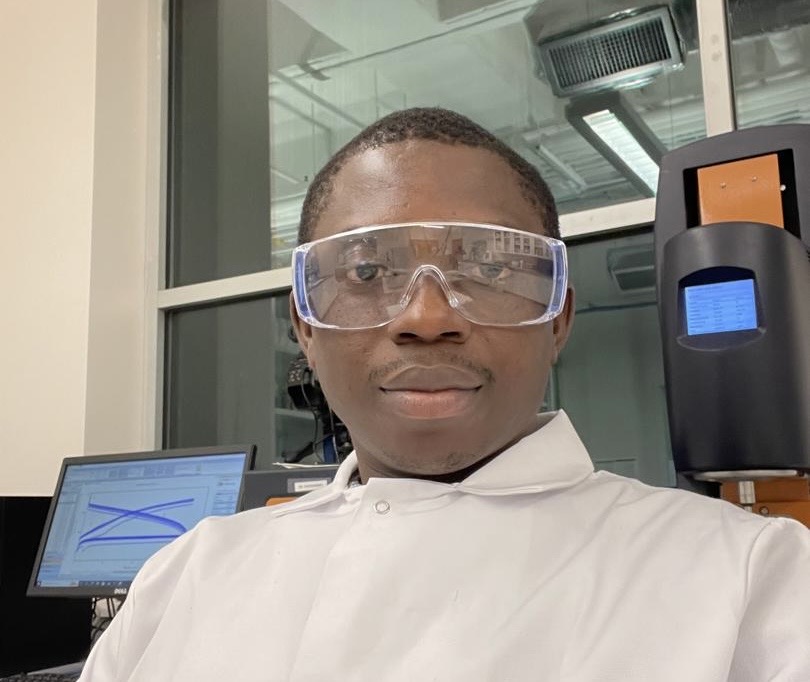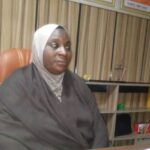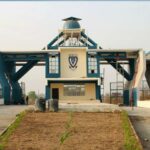A Nigerian-born American-based sustainability scientist Dr Ugochukwu Ewuzie, has commenced research on reducing the emissions and environmental impacts of commercial supersonic aircraft, which will birth the reintegration of this half-century-old banned fast-moving planes into the aviation industry.
In an exclusive interview with the Nigerian Tribune, Dr Ewuzie indicated that as an aircraft travels through the air, the air molecules surrounding it are disturbed and flow around it.
The specific manner in which the air reacts to the aircraft is determined by the ratio of the aircraft’s speed to the speed of sound (called Mach number) in the air.
He explained that supersonic aircraft typically move at a speed greater than 750 but less than 1500 mph and achieve a Mach number greater than 1 but less than 3. These aircraft with speeds above the speed of sound are said to be supersonic.
Dr Ewuzie, who obtained his Ph.D. in Industrial Chemistry in Nigeria and training as a chemical engineer, is optimistic about the future of aviation.
He emphasizes that although flying at higher speeds shortens travel time, it necessitates increased energy consumption and fuel burn, leading to more significant emissions. However, he sees a solution in enhancing aircraft aerodynamics, developing more efficient engines, and transitioning from fossil-based conventional jet fuel to sustainable aviation fuels (SAFs) that offer lower net life-cycle carbon emissions.
He is currently running another doctorate degree program in Chemical Engineering with the Sustainable Materials Laboratory (SusMatLab) at Missouri University of Science and Technology, where he was awarded the prestigious Kummer Innovation and Entrepreneurship Doctoral Fellowship to find innovative solutions to industrial waste for sustainable energy and infrastructure.
He is also working on a NASA-sponsored,multi-university project to design and assess supersonic aircraft combustors for improved efficiency and reduced emissions.
“Reviving supersonic aircraft entails a more challenging task than building Mach 1 aircraft– scientists must convince a climate-change-rattled world that their comfort won’t worsen the global emissions problem”.
“Interestingly, aircraft aerodynamics improvement, the design of more efficient engines, and the use of SAFs are the most straightforward strategies to address the emissions challenge,” Dr Ewuzie says.
Based on this, his research is partly to employ the North American Reference System (NARS) and its ancillary instruments to monitor gaseous and non-volatile particulate matter (nvPM) emissions from the newly designed combustor and further explore routes to produceSAFs from wastes.
He indicated that the NARS is an assembly of nvPM mass and number emissions measurement instruments compliant with the International Civil Aviation Organization’s (ICAO) new regulatory standard for sampling and measuring nvPM emitted from exhaust nozzles of aircraft, which do not volatilize at high temperatures.
“I am contributing my analytical instrumentation expertise to employing NARS equipment, including AVL micro soot sensor, Artium Laser-Induced Incandescence, and Dust Monitor System for nvPM mass determination and AVL ParticleCounter equipped with Condensation Particle Counter for nvPM number determination.”
“Presently, conventional data software like Excel is used to analyze emissions data from NARS, which is cumbersome for such inevitably extensive emissions data”.
“I am working to integrate novel chemometrics and artificial intelligence-based tools for use in emissions data analytics toreduce the time and amount of data acquired for regulatory decision-making,” Dr Ewuzie explained.
Furthermore, Dr Ewuzie, who spent almost a decade as a contractor at Chevron Nigeria Limited, working as a laboratory scientist on its Fischer-Tropsch (FT) Escravos Gas-to-Liquids(EGTL) refinery, is set to explore the FT route to producing synthesized paraffinic kerosene (SPK) from solid wastes, which ASTM D7566, Annex A1, approved.
“Compared with conventional aviation fuel, 100% SAF can potentially minimize greenhouse gas emissions by approximately 94%, contingent upon the feedstock and technological pathway.”
“Among other SAFs approved by ASTM for blending with conventional aviation fuel, SPK produced through FT route ranks the highest, allowing a 50% v/v maximum blending rate.”
“I will leverage the experience acquired from EGTL’s Fischer-Tropschtechnology to explore the production of SPK from various waste materials,” Dr Ewuzie affirms.
“This collaborative research with other experts in aerospace engineering to design more efficient combustors that can use SAFs to reduce emissions is expected to upturn the ban on commercial supersonic aircraft, permitting the civil supersonic transportation market and making it capable of safe operation over land with minimal environmental impact.”
“Other benefits of this research include safe traveling at half the time it takes today’s commercial subsonic airplanes and air connectivity and growth, which is vital for economic growth.” He further explained.
“Air connectivity unlocks a country’s economic growth potentialby allowing travelers to access a more expansive network quickly. With increased connectivity, air travel times are reduced, availing businesses access to a broader marketplace. It becomes efficient for managers and executives to superintend far-flung operations, which imbues efficiency into those operations.
In addition, it enables a free flow of investment and human capital across borders, improving returns on investment for various projects” “Besides, this research contribution will position the United States firmly on track to reach net-zero carbon emissions by 2050 and support the overarching vision of building a more sustainable, resilient, and equitable economy.” Dr Ewuzie added.
Regarding how his research efforts will benefit developing countries like Nigeria, he emphasized that the nation is rich in raw materials, agricultural products, and significant amounts of solid waste, the approved feedstocks for producing SPK.
Additionally, Nigeria is one of the few countries utilizing Fischer-Tropsch (FT) technology to convert gas into synthetic fuels. The government can stimulate economic growth and advance the country’s aviation industry by harnessing these resources.
“Notwithstanding, I intend to apply my extensive academic and industrial experiences to contribute to the advancement of emissions reduction research in the United States, which will benefit various sectors and the environment”, he noted.






